A Truffle in the Hand is Worth Eight Underground
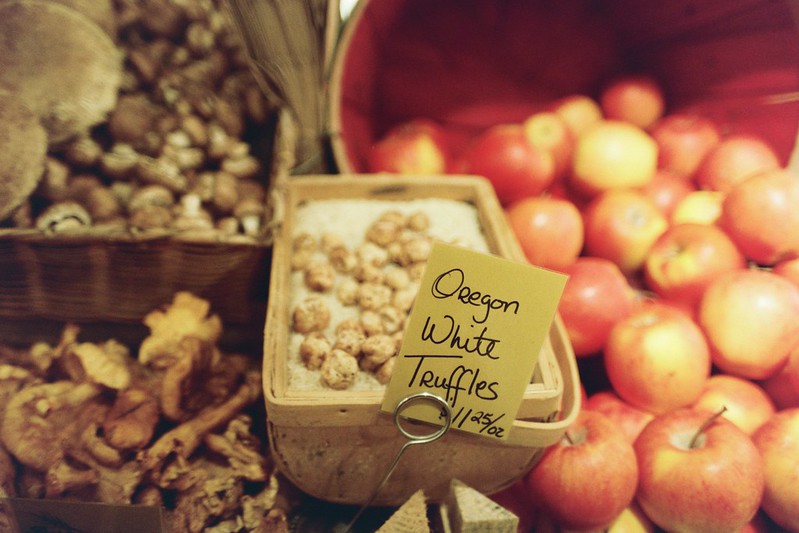
Photo by Hanna Gilbert via Flickr
Walk through a young Douglas-fir forest in northwestern Oregon or southwestern Washington, and your feet might be inches from the most delicious flavor in the world: truffles.
Truffles are the fruiting body of subterranean fungi, often found growing near tree roots. Although they’re basically a form of mushroom, truffles bear little resemblance or similarity in taste to the above-ground fungi found all over our forests.
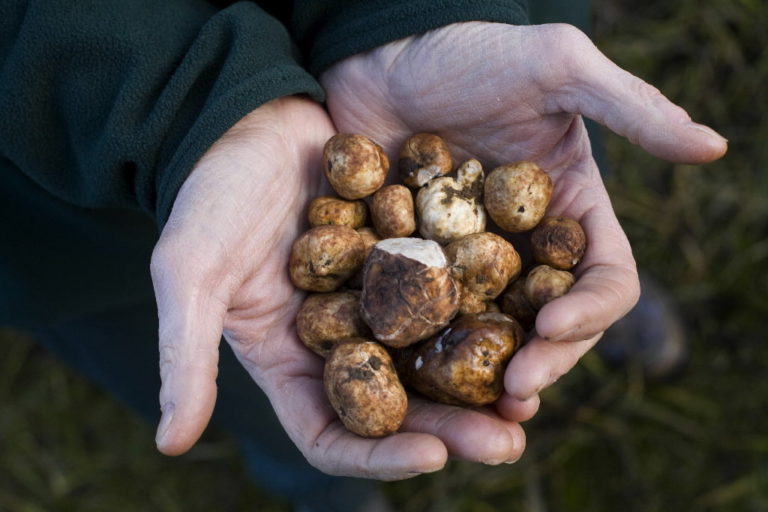
European truffle varieties such as the Italian white truffle and the French black truffle enjoy most of the culinary limelight—but Oregon’s truffles are nothing to be sniffed at! Their excellent culinary qualities are a well-kept secret.
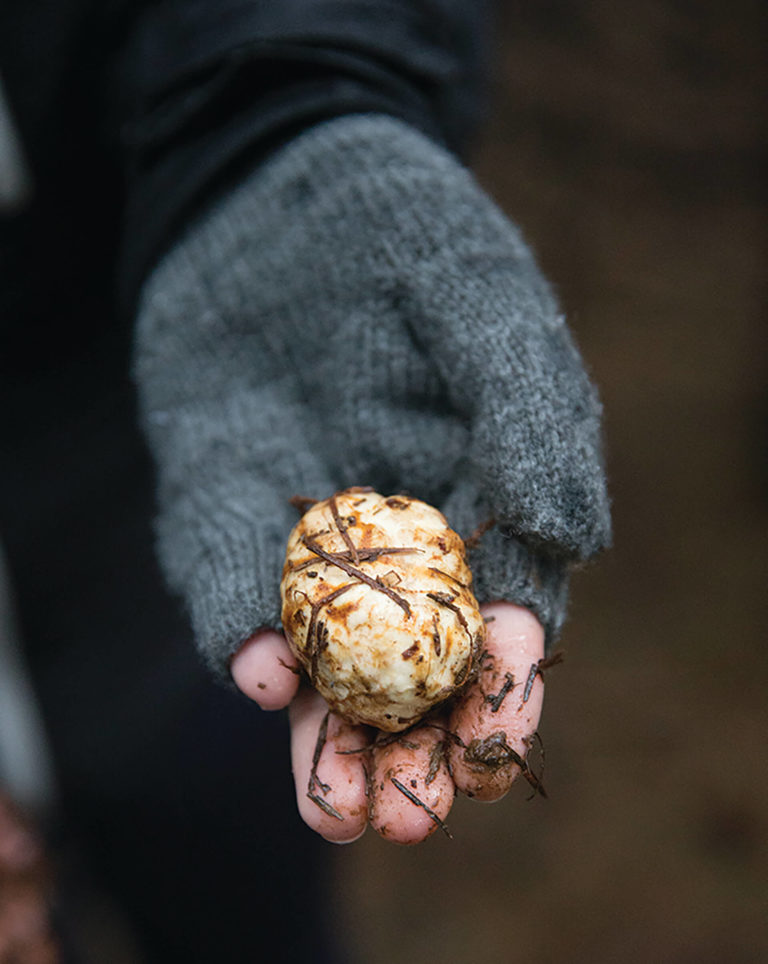
“[Pacific Northwest Truffles] currently sell for less than their European truffles, probably for a combination of many reasons, such as having a younger culinary history and lacking visibility to, and easy access by, consumers, and a
general lack of experience by chefs in recognizing quality product and maturing techniques. Native Northwest truffles are not better or worse than European truffles, just different, demanding their own unique recipes to highlight their qualities.”
Two Oregon family forest owners know the secrets of Pacific Northwest truffles better than most; Marilyn Richen and Tammy Jackson truffle at their family woodlands—450 acres of woodlands in Columbia County—together with their dogs Blue and Gucci. In late fall and winter, the four regularly explore the nooks and crannies of their forest on truffle hunts.
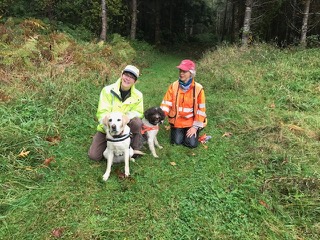
Gucci is a labrador retriever and an accomplished truffle hunter. In fact, she’s the winner of the 2015 Joriad North American Truffle Dog Championship, held at the Oregon Truffle Festival each year. Before the career change that won her that honor, Gucci was in training to be a guide dog for the blind. While her penchant for sneaking food as a puppy made her not-quite-right for that job, Gucci found her calling when Marilyn and Tammy enrolled her in truffle dog training with Jeannine May at Pacific Truffle Dogs.
“She has a great work ethic, working hard for long periods of time. Because our land is not prime truffle property she learned to search for a long time without a find…and reward. We have been told she stands out among truffle dogs because of her ability to persevere,” says Tammy.

The couple’s younger dog, Blue, is a five-year-old lagotto romagnolo, the foundation breed of poodles and Portuguese water dogs. Lagottos have been used to hunt truffles in Italy for about a century. Although he’s newer to truffle hunting than Gucci, it’s clear he also has a keen nose. “Blue has had two seasons working truffles and is coming into his own. He was introduced to truffle odor as a pup but did not hunt until we adopted him a couple of years ago,” says Tammy.

Discovered in Italy in 2014, the world’s largest truffle weighed over four pounds. After being flown to New York accompanied by a security guard, it sold at auction for $61,250.
The forays are as fun for the dogs as they are fruitful for the humans, who often enjoy shavings of the delicious truffles with popcorn or eggs post-hunt.
But Marilyn says the real prize is the bond they’ve developed with their dogs. “It’s about learning to communicate with each other. You learning the dog’s signals and the dog learning yours.”
Gucci’s signal for, I think there’s a delicious truffle here, is pretty obvious: she starts digging it up and tries to eat the fungus, which is as tasty to dogs as it is to humans. “You have to stay very close to Gucci when she’s truffling,” laughs Marilyn. Blue has a very different communication style. “He’ll tell you the truffle is there by just pointing at it with his nose.” Then he’ll move on. “You need to be a very attentive handler with him.”
In the Pacific Northwest, truffles are found in young mixed Douglas-fir forests, typically 15-25 years old, at low elevations west of the Cascades. Former pastureland or agricultural land that’s been planted with Douglas-fir makes for especially prime truffle habitat.
A 2009 study on the feasibility of growing Oregon’s truffle industry found that less than 2% of suitable truffle habitat in the Pacific Northwest is currently being harvested.

Three types of culinary truffle are found in Oregon and Washington: the Oregon winter white truffle (Tuber oregonense), the Oregon spring white truffle (Tuber gibbosum), the Oregon black truffle (Leucangium carthusianum), and the Oregon brown truffle (Kalapuya brunnea). Oregon black truffle tend to fetch higher value on the market.
Oregon truffles haven’t earned the same posh reputation enjoyed by French and Italian truffles, in part because the Oregon truffle industry is just coming into maturity. Historically, truffle operations on the west coast used rakes, rather than truffle dogs, to unearth underground truffles. Truffle dogs are trained to find only ripe truffles, but raking unearths ones of all ages. This occasionally led to shipments that included immature, underripe, or overripe truffles, which harmed the industry’s credibility.
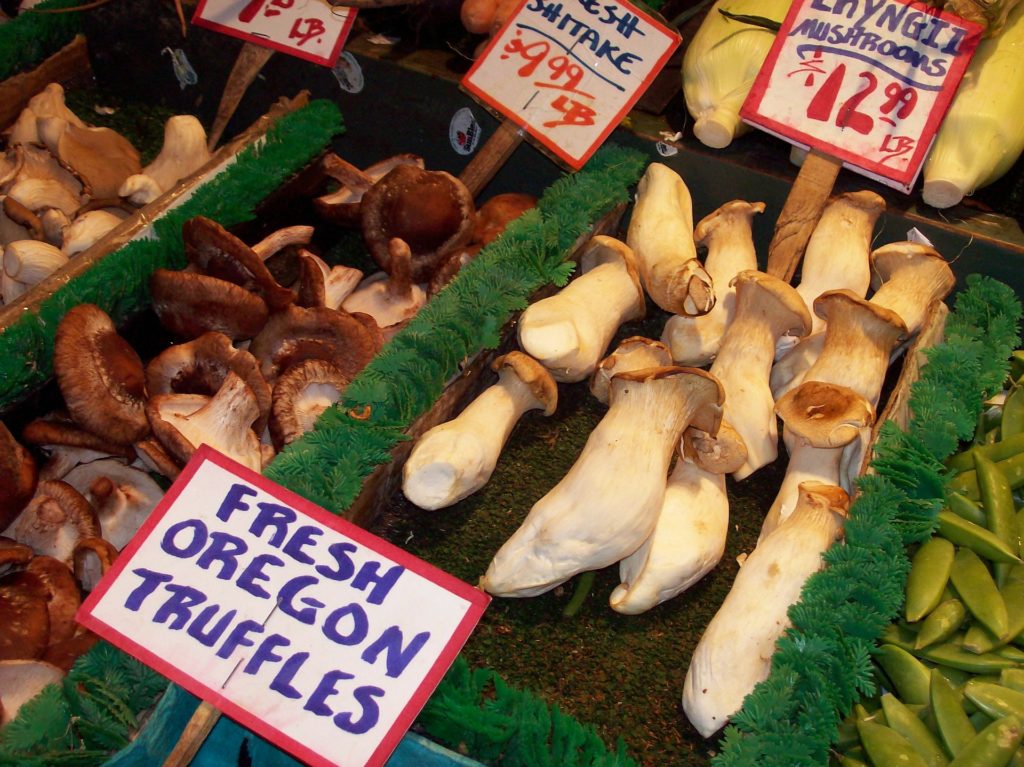
For most woodland owners, truffles are more likely to inspire a hobby than a source of income. Those who wish to do some truffle hunting in their forest can hire the services of a truffle dog and their companion, or enroll their dogs in a truffle dog training course.
Tammy and Marilyn say pretty much any dog with a good nose can become a pro truffler with some training—the purebred pedigree and Italian name isn’t a requirement. 2020 and 2019 saw Joey the yellow lab win the competition. The 2018 winner was a rescued Chihuahua mutt named Gustave. Cowboy the German shepherd won in 2017, and the 2016 winner was a Nova Scotia Duck Tolling Retriever. And Gucci the lab won in 2015, the inaugural year of the competition. So while some swear by the Italian lagottos, it seems any good dog with a sharp nose and a capacity for training can get the hang of it.
Marilyn says Gucci’s training consisted of a 90-minute group class once per week for 4-6 weeks, then continued practice in the forests at home for a few months, after which Gucci won the truffle competition in her first season.
“We worked with a family we met last year, because they wanted to train their dog. By the end of the season their dog was finding truffles on their own. Part of the formula is talent and inclination, but a lot of it is the opportunity to have practice. “
Translating the lessons learned at the indoor group class to the forest was tricky. “The key is the moment when you take them out in the woods and they have to translate what they learned [indoors] to a setting where there are a lot more distractions. To get them so motivated to find the truffles is quite a big step that not all dogs can do.”
Interested dog owners can scent train their dogs to hunt truffles themselves using objects dabbed with truffle oil. (But make sure it’s the real thing— many truffle oils available at stores use a synthetic compound created in a lab that mimics the smell of real truffles.) According to the North American Truffling Society (NATS): “The general principal is to start when the dog is young, and get them used to the scent of truffles by having them fetch a sock with mature truffles inside, and gradually work up to finding the hidden, then buried sock.”
General resources on Oregon truffles
North American Truffle Society
Oregon Native Truffles: A primer for commercial production on small forestlands
Oregon Truffle Festival
Resources related to truffle dog training
Pacific Truffle Dogs | Portland
Umami Truffle Dogs | Veneta
NW Truffle Dogs | Portland
K-9 Behavior Company | Roseburg
Trifecta Training | Eugene
Toil and Truffle | Seattle

One Comment
You actually can use fake truffle to train a truffle hunting dog. Both artifical truffle flavoring and real truffles gets most of their aroma from a chemical called 2,4-Dithiapentane. Fake truffle oil uses a lab synthesized version of this chemical but it’s the same thing either way.